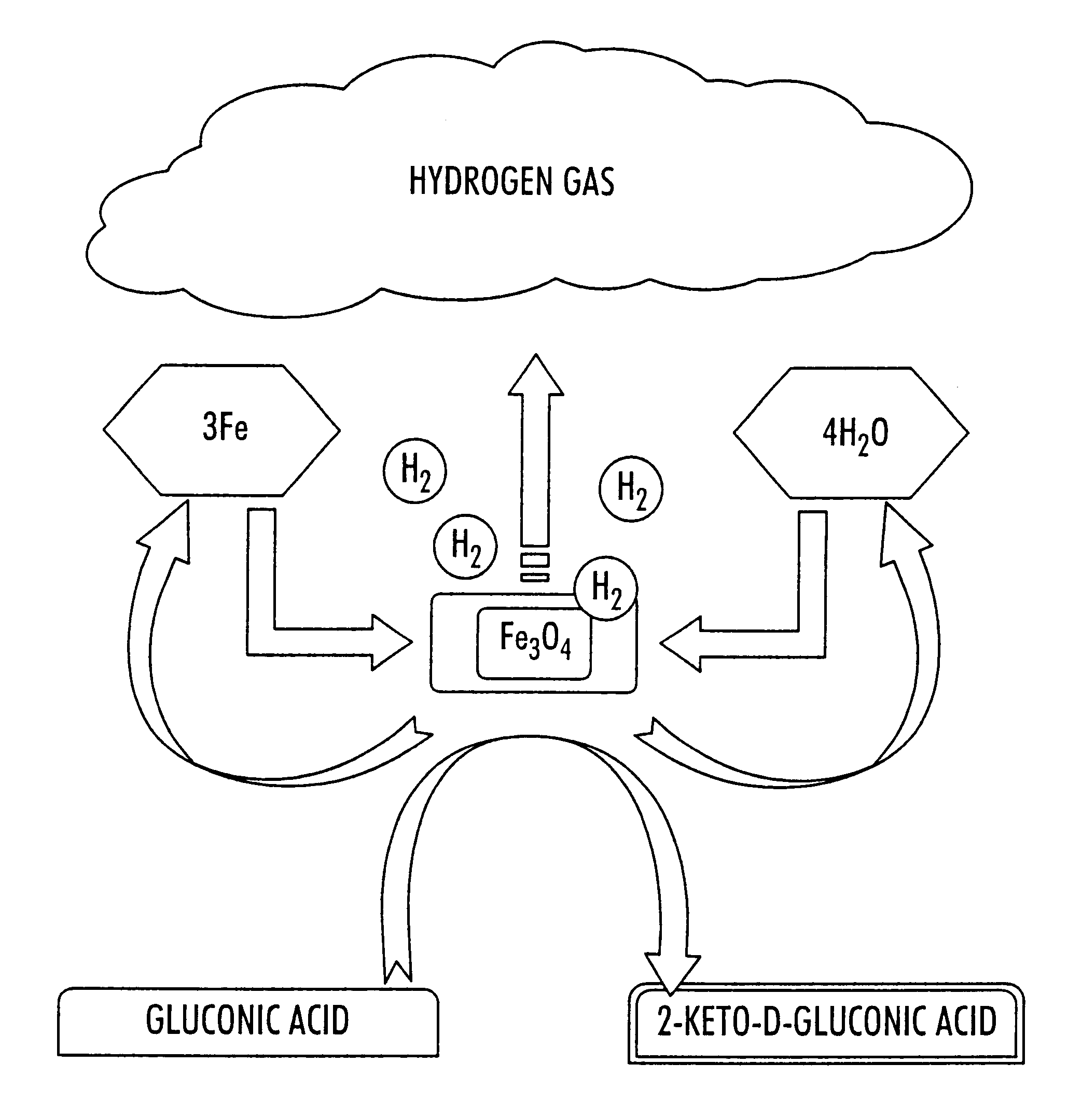Method for the continuous production of hydrogen
a technology of hydrogen production and hydrogen, applied in the direction of hydrogen production, electrochemical generators, chemistry apparatus and processes, etc., can solve the problems of inability to store hydrogen in quantity, high cost of hydrogen production in pure form, and inability to meet the requirements of continuous production, so as to increase the rate of production and overall yield of hydrogen, the effect of increasing the yield
- Summary
- Abstract
- Description
- Claims
- Application Information
AI Technical Summary
Benefits of technology
Problems solved by technology
Method used
Image
Examples
example 2
A housing device 89 was designed and assembled specifically for the fuel cell 94, see FIG. 14a (front view). The hydrogen gas flowed into the housing device 89 first passing through a glass frit 86. The housing device 89 comprised a first glass disc 92 and a second glass disc 92' with a fuel cell 94 sandwiched in between the two glass discs 92 and 92'. Rubber seals 96 were placed between the glass discs 92, 92' and the fuel cell 94. The housing device 89 was held together by lock-down bolts 90 and 90'. The housing device 89 had a gas inlet for atmospheric oxygen 98 and a gas outlet for the excess hydrogen gas 100 that can be used to be recycled back to the reaction step in the reaction vessel. The housing device 89 was connected to a digital clock by wire 102. FIG. 14b shows a top view of the fuel cell 94, 5 mm in diameter. In FIG. 15, it can be seen that the hydrogen fuel cell 94 was connected to the reaction system after the liquid nitrogen gas trap 16, in place of the hydrogen se...
PUM
| Property | Measurement | Unit |
|---|---|---|
| temperature | aaaaa | aaaaa |
| temperatures | aaaaa | aaaaa |
| pH | aaaaa | aaaaa |
Abstract
Description
Claims
Application Information
 Login to View More
Login to View More - R&D
- Intellectual Property
- Life Sciences
- Materials
- Tech Scout
- Unparalleled Data Quality
- Higher Quality Content
- 60% Fewer Hallucinations
Browse by: Latest US Patents, China's latest patents, Technical Efficacy Thesaurus, Application Domain, Technology Topic, Popular Technical Reports.
© 2025 PatSnap. All rights reserved.Legal|Privacy policy|Modern Slavery Act Transparency Statement|Sitemap|About US| Contact US: help@patsnap.com



